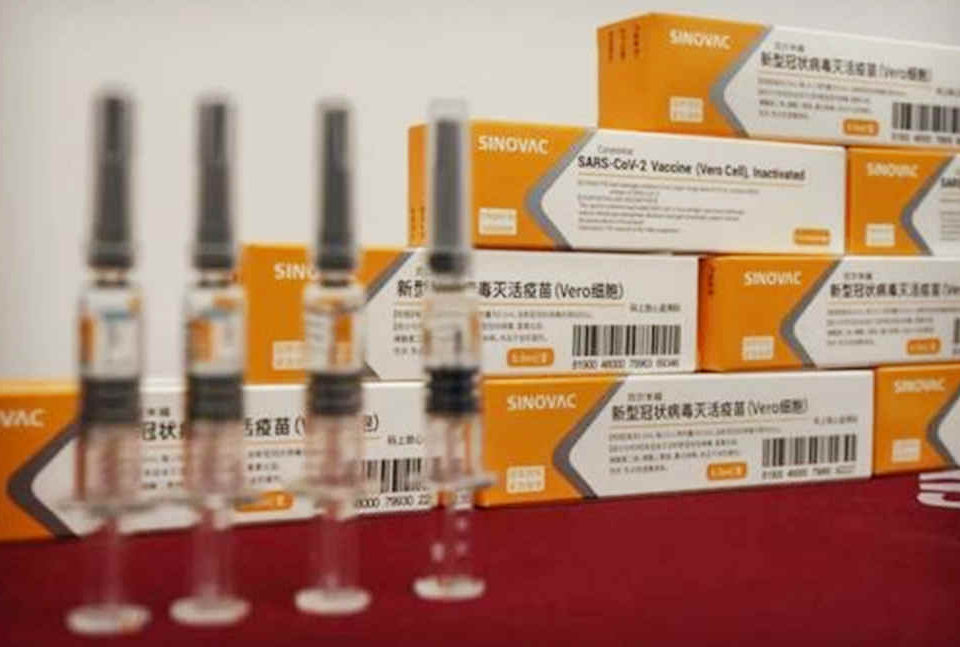- 如有疑问,请联系电邮
- customer@ihealth66.com
USNEWS:肝硬化是什么?

USNEWS:把感恩节餐桌上的火鸡沙门氏菌拒之门外
2018年11月23日
USNEWS:肺癌病人指南
2018年11月23日CIRRHOSIS, A LATE-STAGE effect of liver disease, is a condition characterized by advanced liver scarring that affects liver function. Nonalcoholic fatty liver disease, chronic viral hepatitis and heavy alcohol use are the top three cirrhosis causes.
More than 600,000 people in the U.S. have cirrhosis, according to the most recent estimate using data from the National Health and Nutrition Examination Survey. Here are the basics of how the liver works, the effects of liver disease and current cirrhosis treatments.
[See: 14 Ways Alcohol Affects the Aging Process.]
Liver Function
The liver is a large, solid organ located beneath the lungs. The liver takes in blood from your digestive system and the heart. Filtering or “cleaning” the blood is a crucial role of the liver, which filters and removes waste products formed within the body, as well as filtering incoming toxins, alcohol and drugs.
Among many other vital functions, the liver produces bile – the greenish, yellow or brown digestive fluid in which the liver excretes waste products. Bile helps break down and digest fats, carbohydrates and protein, and is essential for producing blood-clotting factors.
The liver stores energy as a form of glucose, or sugar. It stores several vitamins, and minerals like copper. Iron stored in the liver, formed by the breakdown of blood, helps create new blood cells.
The liver also plays a role in immune system function and blood pressure regulation.
Liver Scarring
Liver fibrosis is the term for large amounts of scarring in the liver. “People can have advanced liver fibrosis, which is the precursor of cirrhosis, and even cirrhosis for a number of years – maybe a decade or so – before it becomes clinically overt,” says Dr. Anna Mae Diehl, a hepatologist and a professor of medicine at Duke University School of Medicine.
“Cirrhosis is an advanced stage of liver scarring that begins to disrupt normal blood flow and function of the liver,” says Dr. Scott Friedman, the dean for therapeutic discovery and chief of the division of liver diseases at the Icahn School of Medicine at Mount Sinai in New York City. “It’s the last stage of a progression of scarring that can occur over many years.”
Liver Malfunction
When liver function is impaired that reduces the body’s ability to perform related functions. Fluid buildup in the abdomen, or ascites, and bleeding in the digestive tract can result.
With cirrhosis, impaired bile processing is a serious complication as waste products collect in the bloodstream. Prescription drugs such as opioids or benzodiazepines may, as a result, produce stronger effectsin people taking them, as well as increased side effects.
Another complication is portal hypertension, in which cirrhosis leads to high blood pressure in certain veins of the stomach, esophagus and rectum, with a risk of bleeding.
Cirrhosis Symptoms and Diagnosis
Symptoms of cirrhosis are often vague, such as fatigue, weight loss and a general feeling of malaise. Occasionally, changes in bowel movements may include fat-filled, excessively foul stools called steatorrhea.
People with cirrhosis can become malnourished as they lose their appetite and digestive ability to absorb fats and certain vitamins. Muscle wasting and changes to the tendons, glands, organs, brain and nervous system can occur.
Cirrhosis can lead to skin changes. Itchy skin is a symptom in forms of liver disease where bile flow is impaired. It can also lead to the development of small clusters of swollen blood vessels near the skin’s surface or so-called spider angiomas. Reddened palms can be signs of cirrhosis, as can fingertip enlargement, or clubbing.
Jaundice – yellowing of the eyes and skin – is a classic symptom of advanced liver disease, as excess bile builds up in the blood and leeches into the skin.
Along with a patient’s physical exam and an evaluation of their medical history, doctors diagnose cirrhosis based on test results. Liver injury tests, other blood tests for viral infections like hepatitis, imaging studies and liver biopsy are used to confirm cirrhosis.
“We still don’t have one single blood test that is absolutely diagnostic, that’s highly sensitive and highly specific for cirrhosis,” Diehl says. However, she notes, several biomarkers combined with other clinical findings would raise suspicion: “For instance, a low platelet count for no reason in an adult should prompt concern that somebody has already got advanced liver fibrosis.”
[See: What Color Should My Pee Be?]
Primary Causes of Cirrhosis
RELATED CONTENT

What You Should Know About Liver Cancer
Fatty liver disease. Nonalcoholic fatty liver disease, or NAFLD, is a condition involving fat deposits in the liver. Nonalcoholic steatohepatitis, or NASH, is the most serious form. With NASH, fat in the liver is accompanied by inflammation and liver cell damage.
Estimates vary, but about 30 percent of U.S. adults are thought to have NAFLD. Risk factors include obesity, Type 2 diabetes, hypertension and high blood cholesterol and triglyceride levels – similar to risk factors for heart attacks, Diehl notes.
Having NAFLD or NASH is a risk factor for developing a form of liver cancercalled hepatocellular carcinoma, as well as cirrhosis. Among people diagnosed with NAFLD, those with liver cirrhosis are at higher still for developing cancer, according to a large, long-term, multicenter studyincluding nearly 300,000 patients with NAFLD, released online Aug. 23, 2018, in the journal Gastroenterology.a
Weight loss is recommended to treat NAFLD and NASH. Losing weight can decrease fat in the liver as well as inflammation and fibrosis. Maintaining a healthy weight and following a healthy, balanced diet may help prevent NAFLD and NASH, and resulting cirrhosis, from occurring.
Alcohol and cirrhosis. The longer and more heavily people drink, the higher their risk of liver disease and cirrhosis.
According to the online Merck Manual, men who drink more than 3 ounces of alcohol daily for more than 10 years are more likely to develop cirrhosis. Because women are more vulnerable to alcohol-related liver damage, drinking about half as much alcohol or even less puts them at risk, according to Merck.
Primary care providers can address this risk by routinely asking patients about their alcohol consumption. Identifying a patient as someone who’s at high risk of cirrhosis doesn’t meant that person is an alcoholic, Diehl emphasizes. “They just may have unsafe drinking patterns,” she says. The goal is to pinpoint the subgroup of people who might be considered for further testing for liver disease.
Friedman notes that although alcohol is a factor in a signification proportion of patients who develop liver disease, “It’s by no means the majority.” When assumptions are made about cirrhosis and alcohol, he says, “It’s an unfair stigma to the larger number of patients who don’t drink heavily and have liver disease from other causes.”
Another common misconception is that cirrhosis is always irreversible. “It’s a cause for concern but not a catastrophe for people diagnosed with cirrhosis,” Friedman says. “And it certainly depends on what it’s from and whether there are treatments for the underlying causes.”
Hepatitis and cirrhosis. Hepatitis is an inflammation of the liver from any cause, including viruses, NASH and alcohol. Among viruses, hepatitis B and hepatitis C infections are transmitted from person to person via blood, semen or other body fluids. Chronic hepatitis can lead to liver damage, cirrhosis and liver cancer.
Recent medical advances are improving outcomes for people with hepatitis. Better treatment for hepatitis means fewer people with the infectious disease will ultimately develop liver complications.
Many people with hepatitis C don’t have symptoms. It’s estimated that about half of those infected with the hepatitis C virus don’t realize they have it. Injection drug abuse is a major cause of hepatitis C. Older adults may have been infected with the virus through blood transfusions or during medical procedures done before effective blood screening and health care safety precautions were implemented. For anyone born between 1945 and 1965, the Centers for Disease Control and Prevention recommends one-time testing for the hepatitis virus.
RELATED CONTENT

What Is Fatty Liver?
Once hepatitis C is confirmed, a treatment regimen of about 12 weeks on antiviral pills has a nearly 100 percent cure rate. Antiviral medications and drugs to boost the immune system can fight the hepatitis B virus and reduce liver damage and risk of cirrhosis and cancer.
Liver Disease and Children
Although rare, genetic conditions such as Wilson disease, as well as biliary atresia and a type of hepatitis called autoimmune hepatitis, can lead to cirrhosis in children.
As child obesity rises, NAFLD AND NASH are becoming more common in children. Nearly 10 percent of U.S. kids ages 2 to 19 have NAFLD, according to the National Institute of Diabetes and Digestive and Kidney Diseases.
[See: 10 Concerns Parents Have About Their Kids’ Health.]
Other Types of Cirrhosis
Previously called primary biliary cirrhosis, the condition now known as primary biliary cholangitis is believed to be an autoimmune disease in which bile ducts in the liver are slowly destroyed. Primary biliary cholangitis, which may be triggered by environmental and genetic factors, is more likely in people with a family history of the disease. Medication can delay disease progression to cirrhosis.
Primary sclerosing cholangitis involves fibrosis of the bile ducts within and outside the liver.
Liver Cirrhosis Treatment
There is no specific treatment for cirrhosis itself. Health care providers treat underlying cirrhosis causes when possible.
Preventing further liver damage is a major goal. People with cirrhosis are advised to stop drinking. In cases of alcohol dependence, a treatment program may be recommended.
In NAFLD and NASH, losing weight may help prevent further liver damage, along with exercise, managing diabetes and maintaining normal blood sugar levels. A low-sodium diet, combined with medication, is used to reduce blood pressure, and in advanced cases, to prevent ascites. In some cases, a shunt may be placed within a liver vein to relieve pressure in the blood vessels emptying into the liver.
Patients are monitored and treated for complications such as varices and bleeding, infections and toxin buildup in the blood. If the liver stops functioning altogether, a liver transplant is the remaining treatment option.
Friedman, who is involved in drug development for NASH and cirrhosis, says there’s a lot of reason for hope: “I anticipate, within the next 10 years, a revolution in our ability to improve liver health and liver regeneration, and reduce fibrosis even in the patients who don’t have the easy cures for viral hepatitis.”





